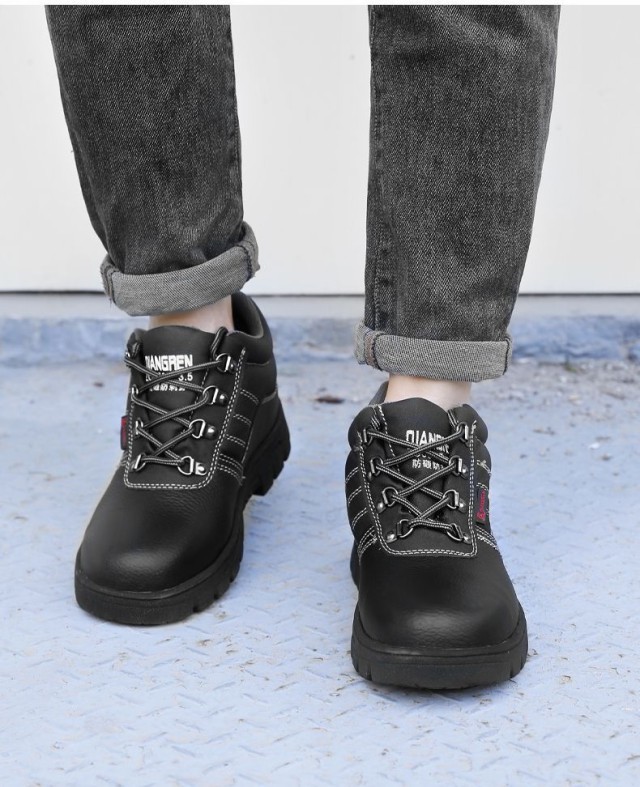Workplace safety starts from the ground up—literally. The right safety boots can mean the difference between a normal workday and a life-altering injury. Yet, many workers and procurement managers struggle to interpret safety labels, leading to mismatched protection against electrical hazards, slips, or impacts. This guide deciphers key certifications and matches them to real-world risks, helping you select boots that actively mitigate your job’s specific dangers.
Why Safety Labels Matter Beyond Compliance
Safety labels aren’t just bureaucratic checkboxes—they’re condensed risk assessments. Ignoring them can have consequences far costlier than a compliance fine.
How Certifications Address Common Workplace Hazards
- Electrical Hazard (EH) Ratings: Boots marked "EH" use non-conductive materials (e.g., rubber soles) to block electrical currents. They’re tested to withstand up to 600 volts in dry conditions, critical for electricians or utility workers.
- Slip Resistance (SR): Symbols like "SRA" (tested on ceramic tile) or "SRB" (tested on steel) indicate grip on slick surfaces—vital in food processing or oil rigs.
- Impact Protection (I/75): A label showing "I" signifies toe caps resistant to impacts up to 75 foot-pounds, common in construction or heavy manufacturing.
The Hidden Cost of Ignoring Labels
A manufacturing plant once faced a $200,000 OSHA fine after a worker suffered electrical burns. The boots provided had puncture-resistant soles but lacked EH ratings—a mismatch for live-wire environments. Beyond fines, injuries lead to lost productivity, insurance hikes, and human suffering.
From Standards to Practical Protection
Not all certifications are equally relevant. Your industry dictates which labels deserve priority.
Construction vs. Manufacturing: Which Certifications Matter Most?
| Industry | Must-Have Labels | Why It Matters |
|---|---|---|
| Construction | ASTM F2413 (impact/puncture), EH | Falling debris and exposed wiring are top risks. |
| Manufacturing | SR (slip resistance), ASTM F2413 | Spills and heavy machinery demand grip and toe protection. |
| Warehousing | ASTM F2413, Heat Resistance | Forklift traffic and concrete floors require durability. |
Case Study: An Injury Prevented by Proper Label Interpretation
A welder avoided molten metal burns by choosing boots with a metatarsal guard (Mt/75)—a label many overlook. The guard deflected a 1,200°F steel splatter, demonstrating how niche certifications address specific dangers.
Next Steps: Auditing Your Footwear Safety
- Inventory Current Boots: Check labels against your team’s daily hazards. Are EH ratings missing for electrical work?
- Train Your Team: Workers should recognize key symbols—like the orange Ω (omega) for electrical resistance.
- Partner with Experts: Bulk buyers like distributors can consult manufacturers like 3515 to match boots to industry-specific risks.
Upgrade Your Safety Strategy: 3515 helps bulk clients and brand owners navigate certifications to outfit workers with boots that actively reduce injuries—not just meet minimum standards. [Contact our team] for hazard-specific footwear solutions.
By treating safety labels as a roadmap rather than red tape, you transform compliance into genuine protection—one pair of boots at a time.
Related Products
- Wholesale Customizable Suede Safety Boots - Puncture-Proof with Velcro Closure
- Durable Leather Moc Toe Work Boots for Wholesale & Custom Manufacturing
- Durable Mid-Cut Tactical Boots for Wholesale & Private Label
- Durable Moc-Toe Wedge Work Boots | Wholesale Manufacturing for Brands
- Wholesale Durable Safety Boots | Custom Steel Toe & Puncture-Resistant Manufacturing
Related Articles
- How to Choose Work Boots That Match Your Job Demands and Safety Needs
- How to Choose Work Boots That Match Your Job's Safety Demands
- How Safety Work Boots Engineer Protection: Features and Standards for Targeted Hazard Mitigation
- Steel Toe Work Boots: Balancing Safety and Comfort for Demanding Jobs
- How to Choose Work Boot Materials for Maximum Safety and Durability



















